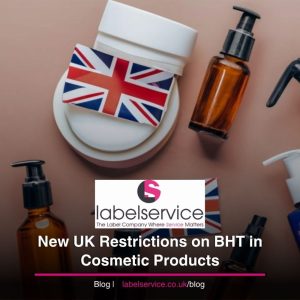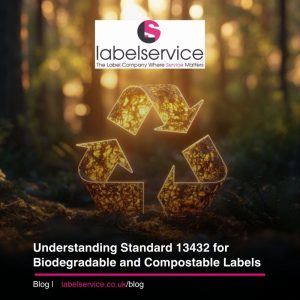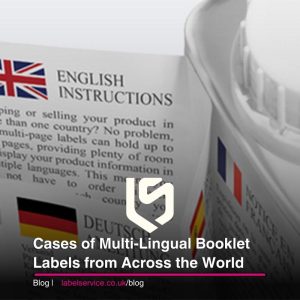Butylated Hydroxytoluene, commonly known as BHT, is a synthetic organic compound widely used as an antioxidant preservative in food, cosmetics, pharmaceuticals, and packaging materials. Chemically, it belongs to a group of compounds called phenols, which are known for their ability to slow down oxidation. Oxidation is a natural process that occurs when products containing fats, oils, or certain chemicals are exposed to oxygen, heat, or light, leading to spoilage, rancidity, and the breakdown of key ingredients. BHT works by neutralizing unstable oxygen molecules known as free radicals, effectively halting the chain reaction of oxidation and preserving the product’s freshness, stability, and quality.
In the food industry, BHT is added to items like breakfast cereals, snack foods, chewing gum, processed meats, and vegetable oils to extend shelf life and maintain flavour and texture. The cosmetics and personal care industries use BHT in products such as lipsticks, moisturizers, and sunscreens, where it helps prevent oils and active ingredients from breaking down over time. It’s also found in certain medications and dietary supplements, where it preserves the integrity of active compounds. Additionally, BHT has a role in packaging, particularly in plastics and rubbers, where it protects both the packaging materials and their contents from oxidation-related damage.
While BHT has been approved for use by regulatory bodies such as the U.S. Food and Drug Administration (FDA), the European Food Safety Authority (EFSA), and the World Health Organization (WHO), it has been the subject of debate in recent years. Some animal studies involving high doses of BHT have raised concerns about potential health risks, including possible links to cancer or hormonal disruption. However, these effects have not been clearly demonstrated at the low levels typically used in food and cosmetic products. In response to consumer demand for simpler, more natural ingredient lists, many cosmetics labels and organic brands now prefer to use naturally derived antioxidants like Vitamin E (tocopherol), rosemary extract, or Vitamin C as alternatives to synthetic preservatives like BHT.
In packaging applications, BHT is sometimes incorporated into plastic films and rubber seals, helping to prevent oxidation that could compromise the quality of both the packaging and the product inside. This use extends the life of packaging materials and helps preserve the taste, aroma, and texture of packaged foods. Despite its long history of safe use and approval by global health authorities, BHT continues to be a compound that some consumers avoid, contributing to an ongoing shift in the market towards more natural, plant-based preservative options.
Cosmetic Implications
On April 1, 2024, the UK published The Cosmetic Products (Restriction of Chemical Substances) Regulations 2024, which adds BHT to the list of restricted substances under UK Cosmetics Regulation. Following the scientific opinion of the UK’s Scientific Advisory Group on Chemical Safety of Non-Food and Non-Medicinal Consumer Products (SAG-CS), the new regulation established the following maximum concentrations for BHT:
- Toothpaste: 0.1%
- Mouthwash: 0.001%
- Leave-on oral care products: 0.001%
- Other leave-on and rinse-off products: 0.8%
The United Kingdom’s Scientific Advisory Group on Chemical Safety of Non-Food and Non-Medicinal Consumer Products (SAG-CS) has recently issued a crucial opinion regarding the usage of Butylated Hydroxytoluene (BHT) in cosmetics. BHT was previously unregulated under the UK Cosmetic Products Regulation, but concerns about their potential as endocrine disruptors (chemicals or substances that can interfere with the normal functioning of the endocrine system in humans and other animals) have prompted a reassessment.
Butylated Hydroxytoluene, often referred to as BHT, has long been used in a wide range of cosmetic and personal care products thanks to its effective antioxidant and preservative properties. Its main role in these formulations is to prevent the oxidation of oils, fats, and other sensitive ingredients, which can otherwise lead to changes in colour, scent, texture, and product performance over time. By slowing down this natural degradation process, BHT helps extend the shelf life of products like moisturizers, lip balms, sunscreens, and makeup, ensuring they stay stable and effective for consumers.
As with many cosmetic ingredients, the safety and acceptable levels of BHT use are continually reviewed by regulatory and scientific advisory bodies. The Scientific Advisory Group on Chemical Safety (SAG-CS) has proposed recommended maximum concentrations for BHT in different categories of cosmetic products to help guide manufacturers and ensure consumer safety. These guidelines are based on thorough evaluations of toxicological data, potential exposure levels, and real-world product usage patterns. By setting clear concentration limits, authorities aim to balance the functional benefits of BHT in cosmetic formulations with responsible, safe use.
While BHT remains approved for use in cosmetics in many regions, including the UK, EU, and US, it has also become a topic of interest in clean beauty circles. As consumer demand grows for simpler, naturally derived, or additive-free products, some cosmetic brands are choosing to replace synthetic preservatives like BHT with plant-based antioxidants such as Vitamin E (tocopherol) or rosemary extract. This shift reflects both consumer preferences and the evolving conversation around ingredient transparency and safety in the beauty and personal care industry.
Despite initial concerns about BHT as potential endocrine disruptors, the safety assessments conducted did not classify them as such. The assessments suggest that these ingredients can be used safely within the specified concentration limits in cosmetic products.
For BHT, the SAG-CS commented that BHT was “not acutely toxic via the oral or dermal routes of exposure”1. They noted that the dermal absorption of BHT is low. Studies have shown that BHT is slightly irritating to the skin, but the members noted that, considering the low concentrations used in formulated products, BHT is not a skin or eye irritant when used in cosmetic products. Considering the weight of the evidence available, they concluded that BHT is not considered endocrine active.
Further Testing
Owing to its extensive use, BHT and its metabolites have been frequently detected in the environmental and biological matrices. For example, BHT was detected at concentrations ranging from 0.02 to 3.02 µg/g in indoor dust, with total concentrations calculated. BHT metabolites have also been reported in sewage, sludge, and mollusks, as well as in human biological samples such as fingernails, blood, and urine.
Concerns regarding the potential toxicity of BHT and its metabolites to humans have increased. In mice, BHT induces lung damage and melanoma metastasis. In rats, it causes liver necrosis, nephrotoxicity, and haemorrhagic death. Notably, BHT can also inhibit the basal expression of estrogen-responsive genes and promote the development of tumours induced by dimethylhydrazine. Oikawa et al reported that BHT and its BHT metabolites induce the production of peroxides and cause cellular DNA damage in mice and rats. Moreover, low concentrations of BHT-Q can induce fragmentation of supercoiled DNA by generating oxygen radicals in vitro. Similarly, BHT-CHO also promotes DNA damage, but to a lesser extent than BHT-Q, whereas BHT-OH, BHT-COOH, and BHT-quinol do not. Similar to the various toxic effects observed in humans and rodents, BHT decreases the heart rate by 25–30% in zebrafish at 48 and 72 h post-exposure. It also causes various morphological abnormalities, including uninflated swim bladder, pericardial edema, spinal curvature, severe yolk deformation, and abnormal pigmentation. Although BHT has been extensively studied in terms of its carcinogenicity, reproductive toxicity, genotoxicity, and behavioural properties in fish and mammals, research on the toxicity of its metabolites and their effects on living organisms, particularly under environmental stress, remains limited in aquatic organisms such as fish.
Study on Affects to Zebra Fish Larvae
Despite the heightened detection of BHT and its metabolites in the environment due to increased BHT use, research on its environmental effects is lacking. In this study, we determined the toxic effects of BHT metabolites on zebrafish larvae. BHT-CHO exposure induced an increase in the heart rate but no other symptoms. BHT-COOH induced morphological abnormalities, including changes in eye size and growth, while BHT-quinol affected morphological abnormalities and eye size. Exposure to BHT-OH and BHT-Q induced delayed swim bladder development. Moreover, exposure to BHT metabolites also induced behavioural changes. The findings of this study provide a more comprehensive toxicological profile of BHT metabolites than currently available in the literature. However, further studies are required to explore changes in gene and protein expression that affect larval development. Such research would enhance our understanding of the mechanisms underlying the effects of BHT metabolites on the development, morphology, and behaviour of aquatic organisms.
The UK’s new regulations on BHT and Kojic Acid in cosmetics aim to ensure their safe use within specific concentration limits. The assessment conducted by SAG-CS have determined that these ingredients are not endocrine-disrupting chemicals when used in accordance with the recommended limits. Formulators and manufacturers should be aware of these regulations and can consider alternative ingredients when necessary.

















